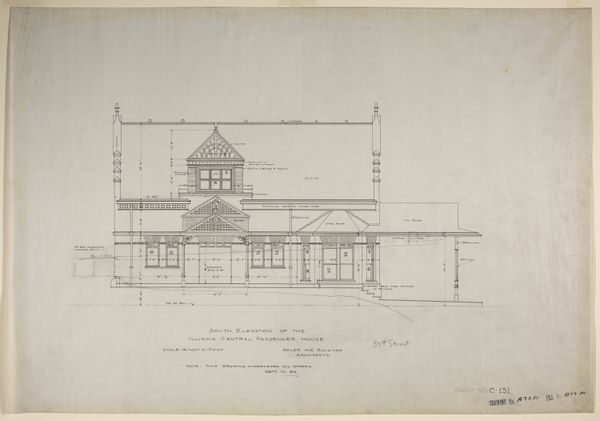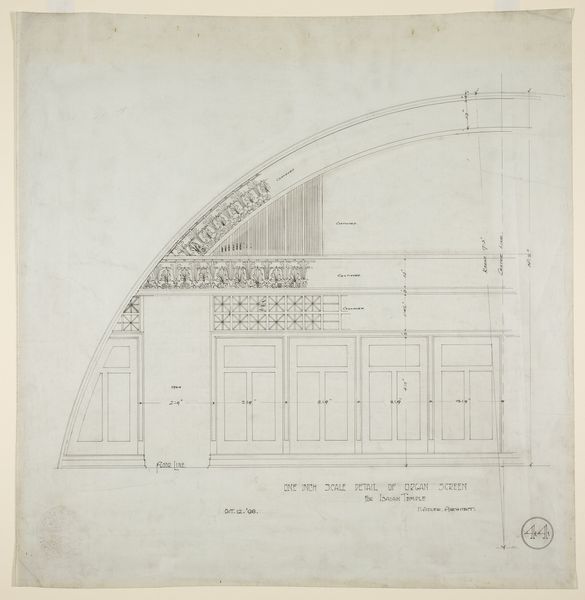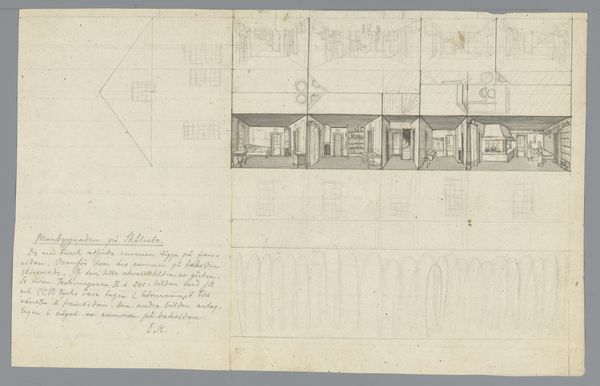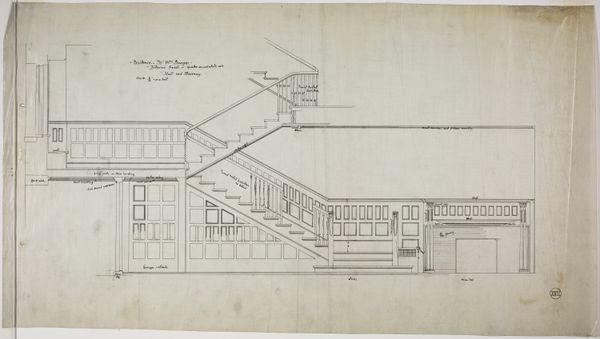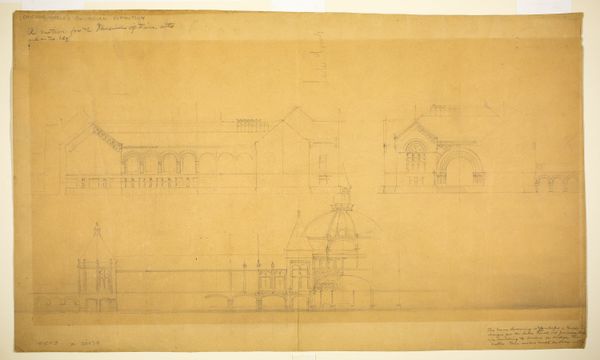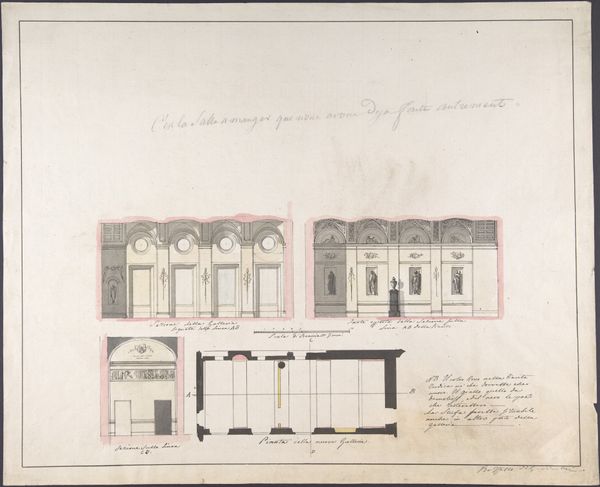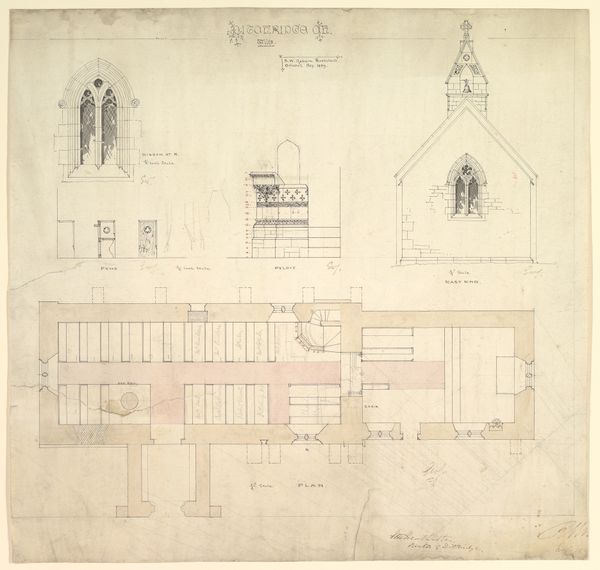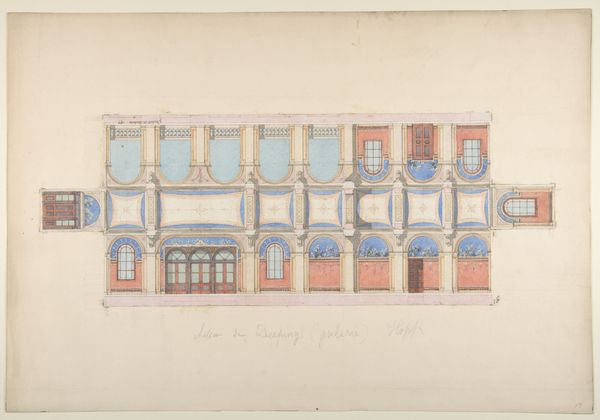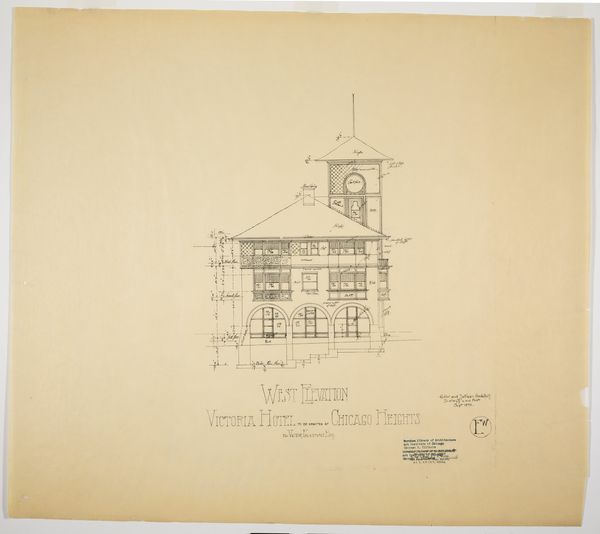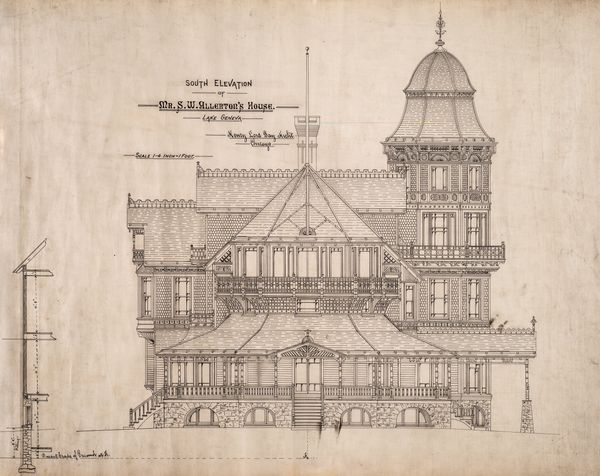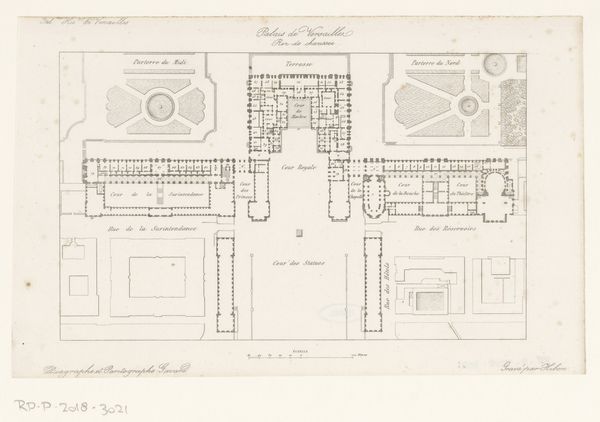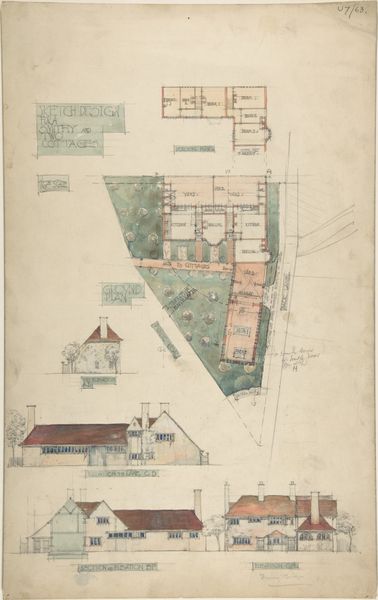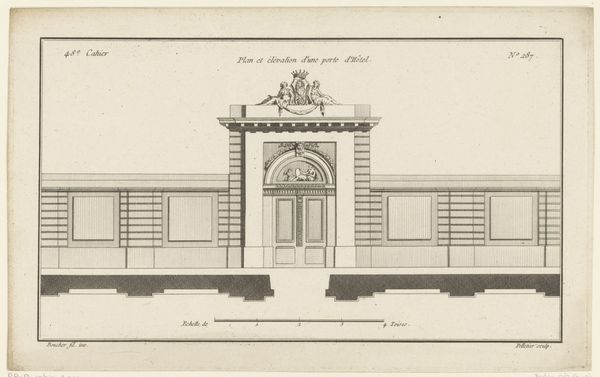
Oakland Avenue Railroad Station, Chicago, Illinois, East Elevation 1886
0:00
0:00
drawing, graphic-art, print, ink, pencil, architecture
#
drawing
#
graphic-art
#
16_19th-century
#
neoclassicism
# print
#
etching
#
ink
#
pencil
#
line
#
architecture
Dimensions: 43.3 × 87 cm (17 1/16 × 34 1/4 in.)
Copyright: Public Domain
Editor: This is “Oakland Avenue Railroad Station, Chicago, Illinois, East Elevation,” a drawing from 1886 by Adler & Sullivan. It's interesting seeing the bones of the building laid bare like this; all the ink, pencil, and etching laid bare. What strikes you about this piece? Curator: The meticulous draftsmanship immediately draws my attention to the labor involved. Think about the social context: the late 19th century in Chicago. This drawing represents not just architectural vision but also the immense effort required to translate that vision into a material reality. Editor: That makes sense. I was just focusing on the building itself as a kind of idea. Curator: But what is that idea, if not linked to production? The neoclassical style suggests a certain aspiration to permanence, perhaps a symbolic investment in the promise of rail travel. The means of realizing that vision - the availability of materials, the cost of labor - shapes the very form it takes. How does that make you reconsider your first impression? Editor: Well, I hadn't thought of the drawing itself as work, as a material product. Knowing that, the architectural style doesn't feel quite as lofty, now, more… grounded? Is that right? Curator: Grounded by the material conditions that allowed its creation and shaped its ultimate form. Even the availability and quality of the drawing paper becomes a relevant consideration. This work asks us to reconsider how high art and craft interact and overlap. It shows how social conditions play out in every beam and brick. Editor: I never thought about blueprints this way. Curator: Seeing the physical elements represented reminds us of both the potential and limitations imposed on even the grandest ideas, and also the often hidden people who do the labour behind this neoclassical structure.
Comments
No comments
Be the first to comment and join the conversation on the ultimate creative platform.
